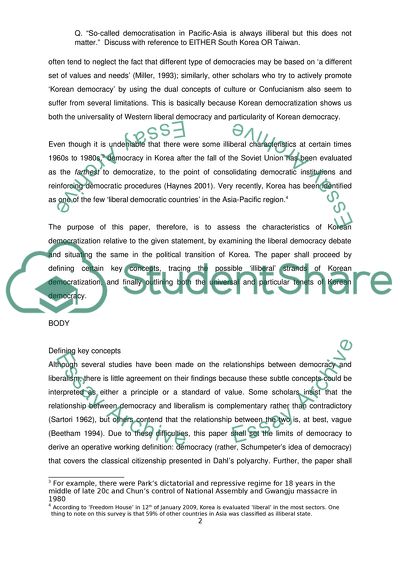Cite this document
(Liberal Democracy and Democratization of Korea Research Paper, n.d.)
Liberal Democracy and Democratization of Korea Research Paper. Retrieved from https://studentshare.org/politics/1724202-liberal-democracy-and-democratization-of-korea
Liberal Democracy and Democratization of Korea Research Paper. Retrieved from https://studentshare.org/politics/1724202-liberal-democracy-and-democratization-of-korea
(Liberal Democracy and Democratization of Korea Research Paper)
Liberal Democracy and Democratization of Korea Research Paper. https://studentshare.org/politics/1724202-liberal-democracy-and-democratization-of-korea.
Liberal Democracy and Democratization of Korea Research Paper. https://studentshare.org/politics/1724202-liberal-democracy-and-democratization-of-korea.
“Liberal Democracy and Democratization of Korea Research Paper”, n.d. https://studentshare.org/politics/1724202-liberal-democracy-and-democratization-of-korea.


